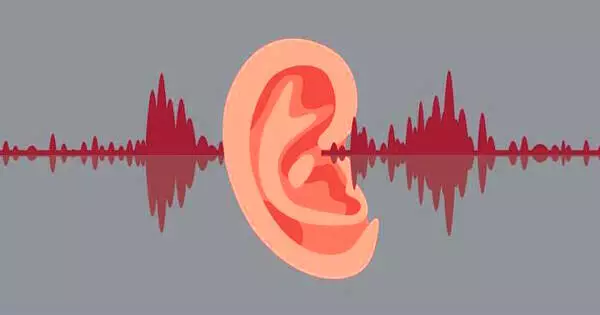Noise, aging, disease, and heredity are all causes of hearing loss. Conversations with friends and family may be difficult for people who have hearing loss. They may also have difficulty comprehending medical advice, responding to warnings, and hearing doorbells and alarms.
Hearing loss caused by aging, noise, and certain cancer therapy drugs and antibiotics is irreversible because scientists have not been able to reprogram existing cells to develop into outer and inner ear sensory cells, which are required for hearing after they die. However, Northwestern Medicine researchers have discovered a single master gene that programs ear hair cells to be either outer or inner, overcoming a major barrier that had previously prevented the development of these cells to restore hearing.
“Our finding gives us the first clear cell switch to make one type versus the other,” said lead study author Jaime Garcia-Anoveros, professor of anesthesia, neurology, and neuroscience at Northwestern University Feinberg School of Medicine. “It will provide a previously unavailable tool to make an inner or outer hair cell. We have overcome a major hurdle.”
Disabling hearing loss affects approximately 8.5 percent of adults aged 55 to 64 in the United States. According to the Centers for Disease Control, this rises to nearly 25% of those aged 65 to 74, and 50% of those aged 75 and up.
Our finding gives us the first clear cell switch to make one type versus the other. It will provide a previously unavailable tool to make an inner or outer hair cell. We have overcome a major hurdle.
Prof. Jaime Garcia-Anoveros
Scientists can currently create an artificial hair cell, but it does not differentiate into an inner or outer cell, which provide different essential functions in the production of hearing. The discovery is a significant step forward in the development of these specific cells.
Older people who can’t hear well may become depressed or withdraw from others because they are frustrated or embarrassed about their inability to understand what is being said. Sometimes, older people are mistakenly thought to be confused, unresponsive, or uncooperative because they don’t hear well.
Hearing problems that are ignored or untreated can get worse. If you have a hearing problem, see your doctor. Hearing aids, special training, certain medicines, and surgery are some of the treatments that can help.

“It’s like a ballet” as cells crouch and leap
The death of outer hair cells made by the cochlea are most often the cause of deafness and hearing loss. The cells develop in the embryo and do not reproduce. The outer hair cells expand and contract in response to the pressure of sound waves and amplify sound for the inner hair cells. The inner cells transmit those vibrations to the neurons to create the sounds we hear.
“It’s like a ballet,” Garcia-Anoveros says with awe as he describes the coordinated movement of the inner and outer cells. “The outers crouch and jump and lift the inners further into the ear. The ear is a beautiful organ. There is no other organ in a mammal where the cells are so precisely positioned. (I mean, with micrometric precision). Otherwise, hearing doesn’t occur.”
TBX2 is the master gene switch discovered by Northwestern scientists that programs ear hair cells. When the gene is activated, the cell transforms into an inner hair cell. When the gene is turned off, the cell transforms into an outer hair cell. Garcia-Anoveros believes that producing one of these cells will necessitate a gene cocktail. The ATOH1 and GF1 genes are required for the formation of a cochlear hair cell from a non-hair cell. The TBX2 would then be turned on or off to generate the required inner or outer cell.
The goal would be to reprogram supporting cells, which are latticed among hair cells and provide structural support for them, into outer or inner hair cells.
“We can now figure out how to make either inner or outer hair cells and why the latter are more prone to dying and causing deafness,” Garcia-Anoveros explained. He emphasized that this research is still in its early stages.















